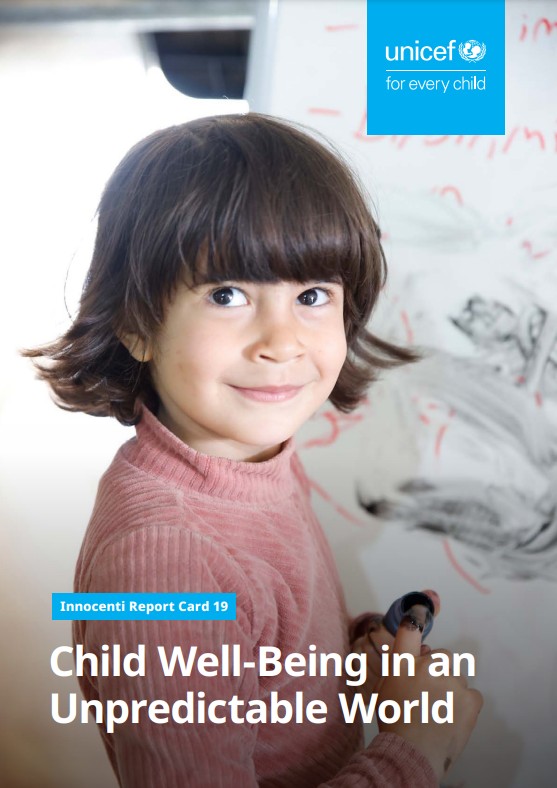ㅇ 보고서는 2018∼2022년 경제협력개발기구(OECD), 세계보건기구(WHO), 유니세프 등의 자료를 활용해 3개 분야(정신 건강, 신체 건강, 삶의 질) 6개 지표(생활 만족도, 청소년 자살률, 아동 사망률, 과체중 비율, 학업 성취도, 사회 교류)를 분석함
ㅇ 종합 분석 결과, 한국 아동의 종합적인 복지 실태는 비교 대상 36개국 중 27위에 그침
□ 기초 학력 분야에서 한국 아동의 성취도는 비교 대상 40개국 중 1위로 다른 선진국 아동을 압도했음
ㅇ 이 지표는 일상생활에 지장이 없을 정도의 읽기·수학 능력을 가진 15세 학생의 비율로 측정되었으며, 한국은 79%를 기록함
ㅇ 뒤이어 아일랜드(78%), 일본(76%), 에스토니아(75%) 순이었으며, 코로나19 팬데믹 기간에 전 세계적으로 학업 성취도가 크게 저하되었다고 보고서는 설명함
□ 학업 성취도와 극명한 대비를 이루는 한국의 지표는 정신 건강 분야로, 청소년 자살률은 42개국 중 5위, 생활 만족도는 36개국 중 30위로 최하위권이었음
ㅇ 최근 3년(2020∼2022)간 15∼19세 인구 10만명당 한국의 자살률 평균은 10.3명으로 직전 조사 기간보다 수치가 크게 올랐다고 보고서는 지적함
ㅇ 전체적인 생활 만족도를 0∼10점 척도로 물은 설문에서 5점 이상으로 답한 15세 학생 비율은 한국이 65%에 불과했으며, 네덜란드(87%), 핀란드(82%) 등이 높았음
ㅇ 교실 내 괴롭힘을 당하는 15세 학생 비율은 8.2%로 비교 대상 국가 중 가장 낮았지만, 이는 크게 위안이 되지 않았음
□ 신체 건강 분야에서도 한국은 중하위권(40개국 중 28위)을 맴돌았음
ㅇ 아동 사망률(5∼14세, 1천명 당)은 0.7명으로 비교적 낮았지만, 비만율은 33.9%로 43개국 중 7위로 높았음
□ 이노첸티연구소는 지난 5년간 대부분 국가에서 삶의 만족도 저하, 학업 능력 하락, 과체중 비율 증가 등의 경고 신호가 나타났다고 밝혔음
ㅇ 이러한 추세는 OECD·EU 국가들이 아동에게 좋은 유년기나 긍정적인 미래를 위한 환경을 제공하는 데 큰 어려움이 되고 있다고 덧붙였음
[출처] '한국, 아이들 학업성취 세계 1위지만 정신건강 바닥권'<유니세프> (2025.05.14.) / 연합뉴스
목차
Introduction 1
Where do rich countries stand in children’s well-being? 3
An overview of recent trends 6
A framework for child well-being 8
Growing up in an unsettled world 9
Trends in mental health 14
Adolescent suicide 15
Adolescent life satisfaction 16
What factors affect adolescent life satisfaction? 18
Why is adolescent life satisfaction decreasing? 20
Summary and implications 26
Trends in physical health 28
Child mortality 28
Trends in child mortality 28
Inequalities in risks of child mortality 30
Child overweight and obesity: An increasing global concern 30
Trends in overweight 31
Inequalities in risks of overweight and obesity 32
Why is childhood overweight and obesity increasing? 32
Changes in children’s diets: Food environments 34
New threats to children’s health 36
Summary and implications 38
Trends in skills 40
Social skills 40
Trends in social skills 40
Inequalities in social skills 41
Emotional skills 41
Inequalities in emotional skills 42
Digital skills 43
Academic skills 44
Trends in academic skills 44
Inequalities in academic skills 46
Trends in academic skills before and after COVID-19 46
The impact of the COVID-19 pandemic on academic skills 48
Did the COVID-19 pandemic affect academic skills? 48
Did the COVID-19 pandemic deepen inequalities in academic achievement? 49
How does digital technology affect children’s academic progress? 51
Summary and implications 53
Conclusions and implications 55
Discussion of key findings 55
Solutions for sustaining child well-being in an uncertain world 57
1. Improving mental health 58
2. Improving physical health 58
3. Supporting the development of a range of skills 59
4. Recognizing the connecting issues, strengthening synergies and avoiding tensions 59
5. Preparing for an uncertain future 60
6. Tackling inequalities 60
7. Engaging children 61
Endnotes 62
Appendix 68



